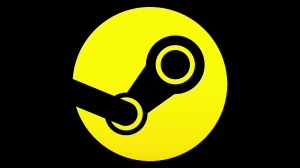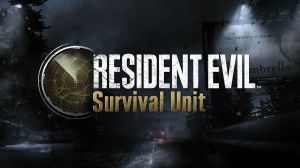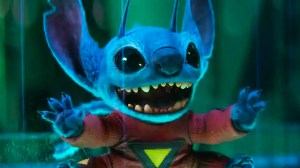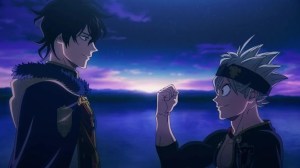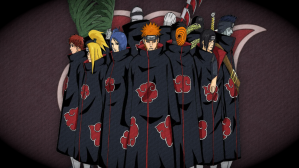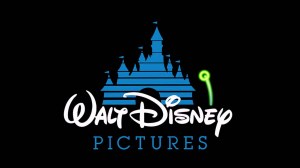Filmmaker Paul W.S. Anderson is no stranger to bringing massive spectacles to life, having spent years developing and helming the Resident Evil series of films, which went on to become some of the most successful video game films in history. Having delivered that franchise’s “Final Chapter” back in 2016, he has turned his sights to a new series, with his passions becoming fully focused on the Monster Hunter video game franchise. Much like with Resident Evil, realizing Monster Hunter in live-action was easier said than done, as he had to condense the sprawling series into one adventure that would appeal to both fanatics and newcomers alike.
Videos by ComicBook.com
In the new film, “Behind our world, there is another: a world of dangerous and powerful monsters that rule their domain with deadly ferocity. When an unexpected sandstorm transports Lt. Artemis (Milla Jovovich) and her unit (TI Harris, Meagan Good, Diego Boneta) to a new world, the soldiers are shocked to discover that this hostile and unknown environment is home to enormous and terrifying monsters immune to their firepower. In their desperate battle for survival, the unit encounters the mysterious Hunter (Tony Jaa), whose unique skills allow him to stay one step ahead of the powerful creatures. As Artemis and Hunter slowly build trust, she discovers that he is part of a team led by the Admiral (Ron Perlman). Facing a danger so great it could threaten to destroy their world, the brave warriors combine their unique abilities to band together for the ultimate showdown.”
ComicBook.com caught up with Anderson to talk about developing the film, what the future might hold, and other projects he’s working on.

ComicBook.com: There’s so much lore to pick through from the video game series, I wondered how you went about developing the script for this film. Did you start with the characters first and then incorporate monsters or select certain monsters and reverse-engineer the storyline around that?
Paul W.S. Anderson: Well, when you play Monster Hunter as an experience, it’s not like playing Tomb Raider where you play Lara Croft and she looks the way she looks, she has a backstory, she talks the way she talks, she is the character. When you play Monster Hunter, you create a character that’s completely new to the world. So, to me, that suggested that the central character of our movie should be a character that’s new to the world. Which, for the gamers, reflects the experience of the first time you play the game.
You’re a person from our world that goes into this fantastical realm and, my God, it’s really impressive. So I wanted to recreate that sense of awe and wonder that you can only get when you’re seeing it through fresh eyes. That suggested to me that Milla’s character should be from our world and new to the Monster Hunter world. But then, of course, once she’s immersed in that world, which happens very quickly, all the characters she meets are taken from the world of the video game.
I took those characters from the latest and greatest and top-selling entries of the video games because I thought those were the ones that the most fans in the world would be aware of. That’s where Ron Perlman’s character, the Admiral, comes from, Tony Jaa’s the Hunter, Hirona Yamazaki’s the Handler. I mean, these are all characters taken straight from the video game.
In terms of the way they look and act and talk, it’s all a hundred percent the game. We brought the game creators on board to help us with that, to make sure we got everything right so that the characters Milla meets, the locations she goes to, the set design, the look of the creatures, the fingernails of the creatures, the sound of the creatures, it’s all a hundred percent from the game.
For the gamers, you’re really delivering, but then for the non-gamers who don’t know anything about Monster Hunter, they don’t feel excluded because they don’t know anything about Monster Hunter, but that’s okay because the lead character who you’re following is going into this world for the first time so you get to discover the world through her eyes. That was my approach to fashioning the story and the structure.
Then, the lore that I took from the games, there’s something that runs through all of the games and it’s this idea of an ancient civilization that fell into disrepair and into myth and legends. But when you explore the world of the game, you keep seeing hints of this ancient, advanced civilization. That really is the basis of the world that you’re operating in. Because the world you’re operating in, it’s almost like Europe in the Dark Ages where there was the advanced technology of the Roman Empire and then that fell into disrepair and we all regressed in terms of technology. But there are these bits and pieces of technology that are still functioning that are a little more advanced and that I found fascinating. That provides a lot of the backbone for the story; the sky tower and the ancients that built it. That was my approach.
You asked about the selection of the monsters; it’s obviously a hard choice to make when you have 15 years worth of a video game called “Monster Hunter,” and, which monsters are you going to choose? It was a three-pronged approach.
One was fan favorites. We work with CAPCOM closely to say, “Which are the monsters that have to be in a movie like this?” And the rathalos is really the poster boy for the video game. He’s on the front cover of a lot of the boxes. You can’t really make a Monster Hunter movie without having a rathalos. So he essentially became our big boss at the end. Then I wanted to go back to some of the earlier games and reference one of my favorites, which was the nerscylla because I just think it’s such an unpleasant creature. I also think it accesses a primal fear that we’re all hardwired with, which is a fear of creepy crawlies, but on a giant scale. So I knew that was something I personally wanted.
The rest of the monsters were really selected with an eye to, “How could I differentiate the action scenes?” When you make a movie that has five or six huge action scenes, the danger you fall into is every scene of fighting a big monster becomes the same. The monster changes, but the mechanics of the fight are the same, and therefore the first fight is amazing but then the next few fights are less amazing because you have diminishing returns.
To avoid that, I tried to choose a creature that had a different strength, a different weakness, and a different way of operating so that Milla and Tony would have to fight in a completely different way to defeat those creatures. So the diablos, for example, is the only creature that can move under the ground and suddenly pop up. The nerscylla is the only creature that lurks in the darkness and doesn’t come out in the light. The apceros is the only creature that exists in a herd environment so that we could have that great stampede. And the rathalos is the first creature you meet that can actually fly. So each creature was chosen to really provide the mechanics for a completely different action scene.
Since you’ve talked about your passion for this to become a franchise and that’s teased in the finale, were there creatures that were cut late in the game that, if you make a sequel, you know you have to include because they didn’t make the cut this time?
We put the gore magala in at the end of the movie, which is a very mysterious creature, it’s very hard to meet in the games. And I like the open-endedness of the ending because, personally, I just enjoyed spending so much time with the characters. I think it would be disappointing if you felt that Milla and Tony were going to go their separate ways and never meet again and never have more adventures.
Whether there are sequels or not sequels, that’s all dependent, obviously, on the box office of the first film. In my mind, as heroes, I wanted to see them go off and have further adventures. So that’s really what motivated the open ending of the film.
It was announced earlier this year that you were developing a TV series based on the movie Mimic. Is that project still moving forward or has the coronavirus pandemic slowed everything down?
There’s definitely progress on Mimic. Because it’s in the development stage, development is built for Zoom calls and everyone staying home and talking. So I think, hopefully, there’ll be progress to actually getting that in front of a camera next year, but hopefully we live in a slightly better world at that point.
*****
Monster Hunter lands in theaters on December 18th.
This interview has been edited for length and clarity. You can contact Patrick Cavanaugh directly on Twitter.


